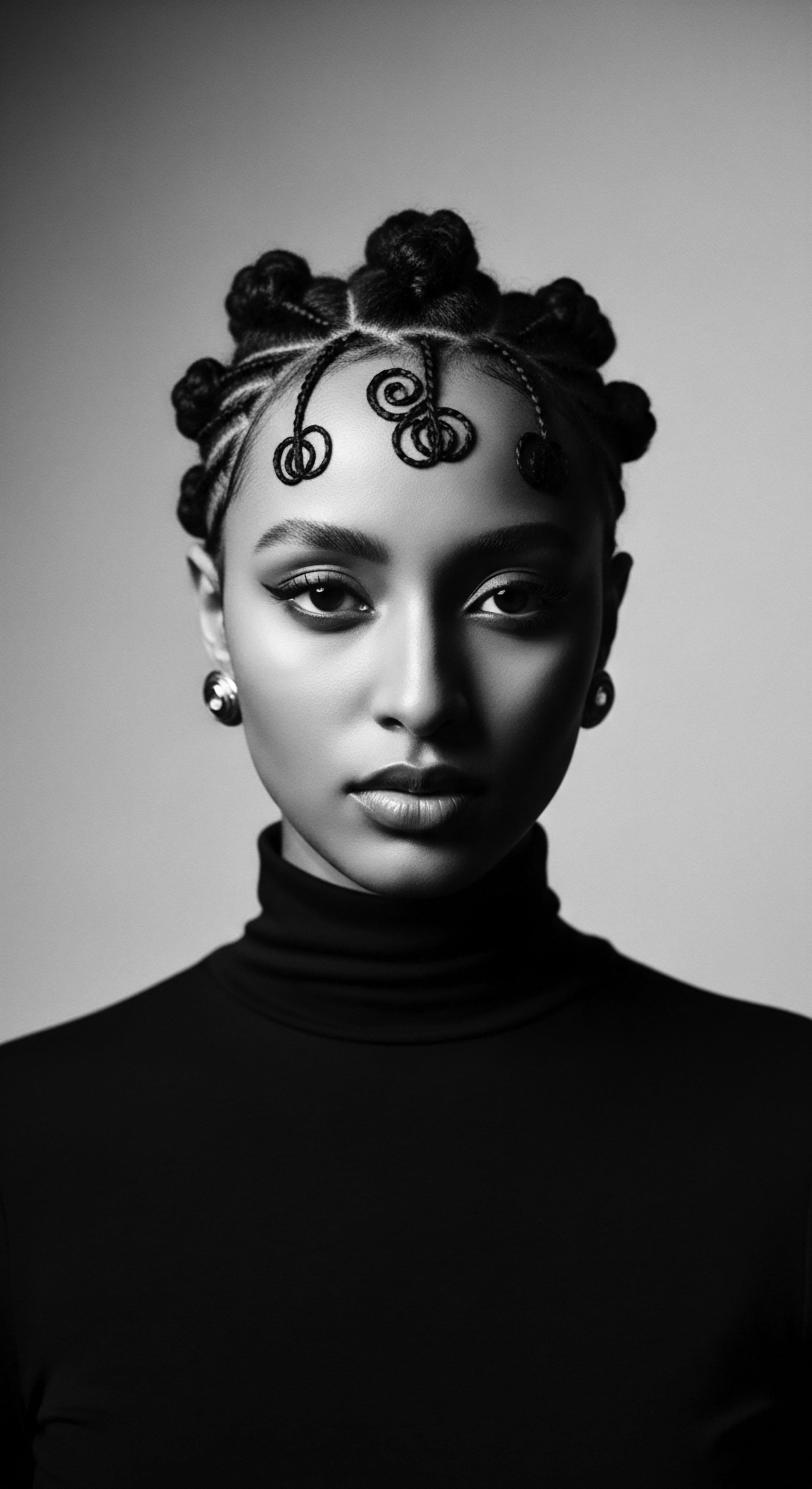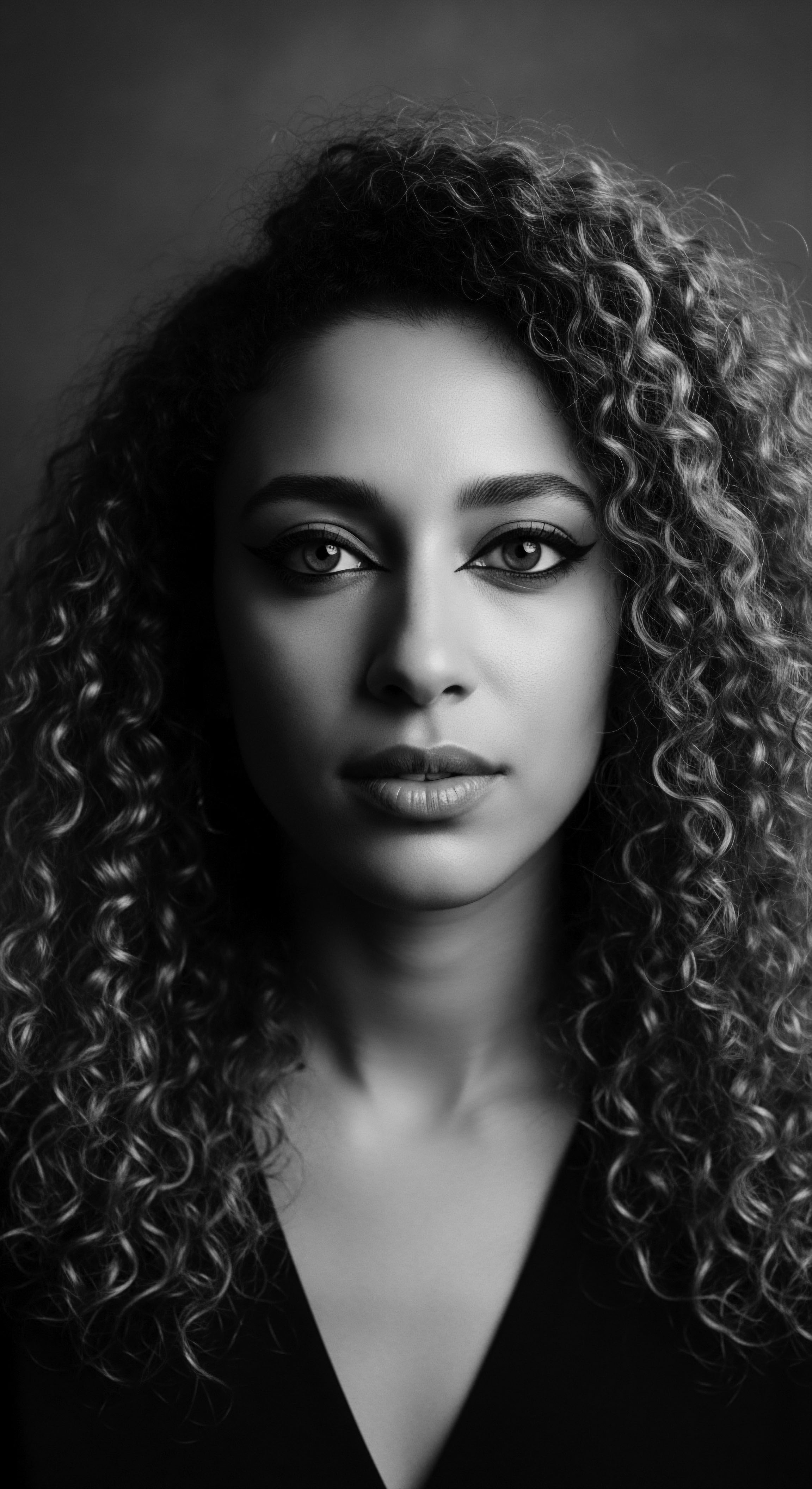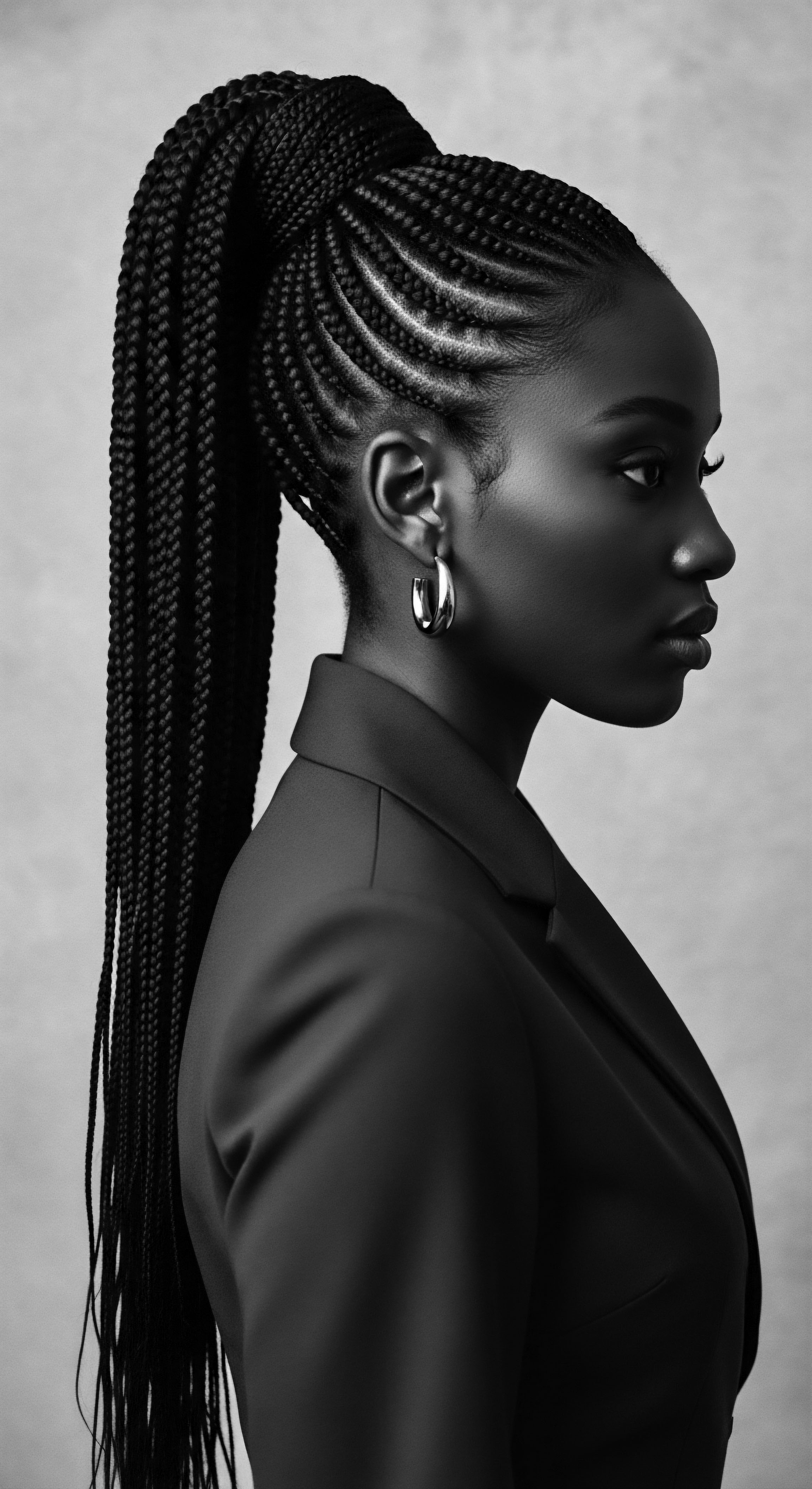
Roots
To stand upon the earth, to feel the sun upon our face, and to sense the subtle shift in the wind—these are universal human experiences. For those of us with textured hair, there exists an unspoken, intimate connection to the earth’s bounty, a lineage that runs as deep and as varied as the curl patterns themselves. We consider the very strands that spring from our scalp not merely as adornment, but as living archives of our heritage, each coil and wave whispering tales of ancestral care. Within this profound connection, the historical significance of plant butter use for textured hair care traditions emerges as a luminous thread.
The journey of plant butters, from the heart of the shea belt in West Africa to the lush cacao groves of Mesoamerica, mirrors the diasporic experiences of Black and mixed-race communities. These rich, earth-derived emollients were not simply cosmetic agents; they were vital components of rituals that maintained not only the physical health of textured hair but also its spiritual and cultural integrity. Understanding this history requires a sensitive hand, a reverence for the wisdom passed through generations, and a scientific curiosity that honors the efficacy of these timeless practices. It is a story of resilience, ingenuity, and profound respect for the natural world that shaped the beauty traditions of our forebears.

How do Plant Butters Interact with Textured Hair’s Innate Structure?
Textured hair, with its unique helical structure, presents particular needs distinct from straighter hair types. The twists and turns along the hair shaft create points of vulnerability, where the cuticle, the hair’s protective outer layer, can lift. This characteristic geometry also makes it more challenging for natural scalp oils to travel down the entire strand, leading to dryness, particularly at the ends. Here, plant butters historically stepped in.
Their unique fatty acid profiles and lipid compositions provide a dense, occlusive layer that helps to seal the cuticle, thereby minimizing moisture loss. This protective action maintains the hair’s hydration levels, imparting elasticity and reducing susceptibility to breakage.
Consider the structure of a single strand. It comprises layers ❉ the innermost Medulla, the robust Cortex (which dictates strength and elasticity), and the outermost Cuticle. For textured hair, this cuticle often has more raised scales, allowing moisture to escape readily. Plant butters, with their semi-solid consistency at room temperature, melt into a liquid when warmed by the body’s touch.
This allows their beneficial compounds to spread across the hair shaft, creating a substantive barrier. This barrier not only traps water within the hair but also offers a shield against external aggressors like sun and wind, conditions frequently faced by communities in their ancestral lands. The very density of these natural fats allowed for a more sustained protective effect, unlike lighter oils that might dissipate quickly.
Plant butters offered ancestral textured hair care traditions a unique capacity to seal moisture and protect delicate strands from environmental stressors.

What Botanical Sources Yielded These Hair-Nurturing Butters?
The botanical realm provided an array of potent plant butters, each with its distinctive properties, yet all sharing a common thread of deep conditioning. These were sourced from trees and plants native to regions where textured hair flourished, reflecting an intimate knowledge of local ecosystems.
- Shea Butter ❉ Derived from the nuts of the Vitellaria paradoxa tree, often called “The Sacred Tree of the Savannah,” shea butter reigns supreme in West African hair care. Its abundance in vitamins A and E, alongside essential fatty acids, supports its reputation for profound hydration and protection. Women in West Africa have harvested and processed shea nuts for centuries, a tradition often referred to as “women’s gold” for its economic significance to communities.
- Cocoa Butter ❉ Extracted from the seeds of the Theobroma cacao tree, native to Mesoamerica, cocoa butter has a rich history across the African diaspora and beyond. Its emollient properties made it a cherished ingredient for nourishing hair and skin. Ancient Egyptians, for instance, are believed to have used cocoa butter for its viscosity to massage into hair, acting as a primitive gel for slick styles and a glossy sheen, indicating status.
- Mango Butter ❉ Sourced from the kernels of the mango fruit, this butter, while perhaps less historically documented than shea or cocoa for hair, still falls within the broader category of plant emollients used across tropical regions for their softening and conditioning attributes. It shares a similar fatty acid composition to shea, providing comparable benefits for dryness.
- Kombo Butter ❉ A lesser-known but historically significant butter derived from the seeds of the African nutmeg tree (Pycnanthus angolensis), particularly used in West African traditional medicine and skin care. Its application in hair care would have been linked to its anti-inflammatory properties, soothing irritated scalps while providing moisture.
These butters were often part of complex formulations, mixed with other oils, herbs, or clays, creating bespoke treatments tailored to specific needs and cultural practices. The knowledge of which plant yielded which benefit was part of a rich oral tradition, passed from elder to youth, mother to daughter, maintaining a continuum of heritage.

Ritual
The application of plant butters to textured hair was seldom a solitary, hasty act. Instead, it was interwoven with collective life, communal bonds, and deeply personal moments. These practices formed the very fabric of hair care rituals, extending beyond mere cosmetic application to touch upon communal identity, social roles, and spiritual well-being. This layer of meaning distinguishes ancestral hair care from many modern approaches, underscoring its profound historical significance for Black and mixed-race communities.

How Did Plant Butters Influence Traditional Styling Traditions?
Plant butters played an instrumental role in shaping and maintaining the diverse array of traditional textured hairstyles. Their consistency, somewhere between a liquid oil and a solid wax, provided the perfect medium for styling, holding, and protecting intricate patterns. For styles that required definition, like Bantu knots or cornrows, a generous application of butter could help sculpt the hair, providing both hold and a brilliant sheen. The butters also served a practical purpose in protective styles, acting as a barrier against friction and environmental damage.
Consider the labor and artistry involved in elaborate braiding, which was and remains a communal activity in many African cultures. The slickness and manageability imparted by plant butters made the hair easier to work with, reducing breakage during the braiding process and helping to set the style for longevity. For nomadic groups, such as the Basara women of T’Chad, traditional practices involved coating hair in mixtures, sometimes infused with herbs like Chebe powder, and braiding it to retain length. This application of butter or fat helped to prevent breakage and maintain the integrity of the hair over extended periods without washing, a practicality given limited access to water.
The butters also provided a glossy appearance, which historically indicated status and care across many African societies. Ancient Egyptians, for instance, utilized plant-based beauty butters for their hair, which gave them slick styles and a desirable sheen, signaling their societal standing. This highlights how functionality and aesthetic appeal were inextricably linked through the use of these natural emollients.
| Plant Butter Shea Butter |
| Traditional Application in Styling Base for protective styles like braids and twists; applied as a pomade for neatness. |
| Functional Benefits for Textured Hair Provides hold without stiffness, adds a healthy sheen, and aids in detangling. |
| Plant Butter Cocoa Butter |
| Traditional Application in Styling Used for sculpting and setting elaborate ancient Egyptian wigs and natural styles. |
| Functional Benefits for Textured Hair Offers significant viscosity for shape retention, imparts deep luster. |
| Plant Butter Baobab Oil/Butter |
| Traditional Application in Styling Often used in mixtures for length retention, especially in Southern and West Africa. |
| Functional Benefits for Textured Hair Rich in omegas, supports elasticity and prevents breakage. |
| Plant Butter These butters were chosen not only for their availability but for their inherent ability to enhance hair's manageability and appearance in historically relevant styles. |

What Role Did Plant Butters Play in Communal Hair Care Rituals?
Hair care in many African and diasporic communities was, and often remains, a communal activity. It was a time for storytelling, for sharing wisdom, and for reinforcing familial and societal bonds. The careful application of plant butters, often warmed and softened by hand, became a focal point of these gatherings.
Mothers would butter their children’s hair, elders would guide younger hands, and friends would assist each other in intricate styling sessions. These shared moments created a palpable sense of connection, imbuing the act of care with deeper meaning.
This communal aspect extended to the very production of the butters themselves. For instance, the painstaking process of extracting shea butter from nuts traditionally involved groups of women, working together through harvesting, drying, pounding, and kneading. This collective effort fostered economic empowerment and solidified social networks, demonstrating that the product was not separate from the community that brought it forth. The butter, therefore, carried the spirit of cooperation and the legacy of its makers, adding another layer of significance to its use.
Hair care traditions, particularly those involving plant butters, served as conduits for collective cultural expression and intergenerational knowledge transfer.

Relay
The story of plant butters in textured hair care is a saga of enduring wisdom, a relay race where ancestral knowledge is passed from one generation to the next, adapting to new terrains yet retaining its core essence. This relay extends through time, from ancient civilizations to the Black diaspora, revealing a continuous thread of resourcefulness and cultural preservation. Here, we delve into the deeper implications and the scientific resonances of these historical practices.

How do Historical Practices Using Plant Butters Align with Modern Hair Science?
Modern hair science, with its analytical tools and detailed understanding of hair biology, often validates the efficacy of these age-old practices rooted in plant butters. What our ancestors understood through observation and generations of experiential knowledge, contemporary research can now explain at a molecular level. Plant butters, rich in fatty acids, triterpenes, tocopherols, and sterols, contribute to hair health in ways science increasingly recognizes.
For example, the presence of specific fatty acids in butters, such as stearic and oleic acids in shea butter, or lauric acid in coconut oil, contributes significantly to their moisturizing capabilities. Lauric acid, with its smaller molecular size, can uniquely penetrate the hair shaft, reducing protein loss and supporting the hair’s internal structure. This explains why coconut oil, often used alongside butters, has been revered in Ayurvedic traditions for thousands of years.
Moreover, the vitamins and antioxidants found naturally in these butters (like vitamins A and E in shea) provide a protective shield against environmental oxidative stress, which can degrade hair proteins over time. This aligns with modern understanding of how free radicals damage hair and how antioxidants can counteract this. The protective barrier formed by butters also minimizes hygral fatigue, the damage caused by repeated swelling and shrinking of hair as it gains and loses water.
A specific historical example demonstrating the efficacy of traditional plant butter use can be seen in the hair care practices of women from the Basara tribe of Chad . For generations, these women have maintained remarkably long, healthy, and thick hair, often reaching waist-length or longer. Their ancestral ritual involves using a mixture that includes Chebe powder (a blend of herbs, seeds, and plants) combined with a raw oil or animal fat mixture (often clarified butter or Ghee), which they apply to their hair and then braid. This practice, passed down through generations, is believed to prevent breakage and lock in moisture, promoting length retention.
Scientific perspectives today point to the sealing properties of the fat component in this traditional regimen, which helps the Chebe mixture adhere to the hair shaft and prevents moisture evaporation, thereby fortifying the strands against external damage and mechanical stress that lead to breakage (Reddit, 2021). This practical application of fat, a form of plant or animal butter, directly contributed to the health and length of textured hair in a challenging environment long before modern scientific understanding of hair protein or cuticle integrity.
The traditional practice of massaging butters into the scalp also correlates with contemporary insights into scalp health. Scalp massages can stimulate blood circulation, potentially enhancing nutrient delivery to hair follicles, a concept also present in ancient Ayurvedic head oiling rituals.
Here, a comparison of historical understanding with modern validation ❉
- Ancestral Observation ❉ Butters make hair softer, more manageable, and less prone to breaking.
- Scientific Explanation ❉ The rich fatty acids and emollients in butters condition the cuticle, reduce friction, and provide a protective barrier, limiting moisture loss and mechanical damage.
- Ancestral Observation ❉ Certain butters offer protection against sun and dryness.
- Scientific Explanation ❉ Antioxidants (e.g. tocopherols) and the occlusive nature of butters shield hair from UV radiation and environmental dehydration.

What Has Been the Cultural Continuity of Plant Butter Use across the Diaspora?
The forced migration of African peoples during the transatlantic slave trade severed many cultural ties, including hair care traditions. Yet, the memory of these practices, and the resourceful adaptation to new environments, ensured a remarkable continuity. Where native plant butters were not available, substitutes were sought, or the indigenous butters of Africa were imported. The knowledge of their benefits, however, persisted, passed down covertly and resiliently within families.
In the Caribbean, for instance, traditions around castor oil, though an oil rather than a butter, mirror the ancestral reliance on natural emollients for hair strength and thickness. This speaks to the adaptive nature of heritage practices; the fundamental principle of using natural, fat-rich plant products for hair care remained constant, even if the specific plant changed.
Today, as Black and mixed-race communities reclaim and celebrate their natural hair, plant butters like shea and cocoa stand as symbols of this heritage. They are not merely ingredients but tangible connections to ancestral wisdom, markers of identity, and tools for self-care that honor a legacy of resilience. The global resurgence in the popularity of these butters reflects a widespread recognition of their efficacy, driven by a desire to return to practices that are authentic, respectful of nature, and deeply rooted in cultural history.
The women of Ghana, Mali, Burkina Faso, and other West African nations who have cultivated and processed shea nuts for centuries are primary examples of this continuity. Their work, often referred to as “women’s gold,” supports millions economically. This economic reality intertwines with the cultural one; the production and use of these butters are not just about hair health, but about sustaining communities and upholding a living tradition.
The enduring use of plant butters in textured hair care serves as a powerful testament to the resilience of cultural heritage, bridging ancient wisdom with contemporary understanding.

Reflection
As we contemplate the profound historical significance of plant butter use for textured hair care traditions, we find ourselves standing at a quiet, yet powerful confluence. The journey from the earth’s raw generosity to the tender anointing of a strand reveals a story far grander than mere beautification. This narrative speaks of survival, of identity held close amidst adversity, and of a knowing that transcends formal education—a knowledge etched into the very soul of a strand.
Each pot of shea, each jar of cocoa, carries within it the quiet hum of ancestral voices, the wisdom of hands that nurtured hair under sun-drenched skies, and the communal warmth of shared rituals. These plant butters, born of ancient trees, allowed communities to care for their hair in a manner that honored its intricate design and celebrated its unique resilience. They were protectors, shapers, and preservers of texture, but more than that, they were carriers of heritage. They embodied a connection to the land, a testament to ingenious resourcefulness, and a quiet defiance against systems that sought to diminish Black and mixed-race beauty.
The enduring presence of plant butters in contemporary textured hair care is a beautiful continuation of this legacy. It is a conscious choice to lean into a past that offers not only effective solutions for hair health but also a deep sense of belonging and cultural pride. Our textured hair, adorned and cared for with these ancient gifts, becomes a living, breathing archive—a vibrant affirmation of who we are, where we come from, and the unbroken chain of our ancestral wisdom. In every application, we honor the past, celebrate the present, and lay down a path for future generations to discover their own soulful connection to their strands.

References
- Afridi, S. K. & Ahmad, N. (2020). Hair Care Practices from the Diaspora ❉ A Look at Africa, America, and Europe.
- Marsh, J. M. Knowles, S. J. & Simmonds, M. S. J. (2023). Choosing the Right Plant Oil for Hair and Skin Benefits. Cosmetics & Toiletries.
- O’Keefe, R. (2022). African Motherhood and Shea Butter. Hamamat Africa.
- Reddy, S. (2020). Carrier Oils Benefits and Uses For Natural and Organic Hair Care. New Directions Aromatics.
- Smith, J. (2024). Unlocking Ancient African Beauty Traditions ❉ A Tribute to Black History Month with Timeless Indigenous Ingredients for Radiant Skin and Hair. Miraco Beauty.
- Summers, L. (2023). The Archaeology of Hair Treatment. BOSS Magazine.
- Traore, A. (2024). African Hairstyles ❉ Cultural Significance and Legacy. Afriklens.
- Voss, B. (2023). The Forgotten Wisdom of Chebe & Qasil ❉ What Modern Hair Care Is Missing. WholEmollient.
- Wang, L. (2025). Cosmetopoeia of African Plants in Hair Treatment and Care ❉ Topical Nutrition and the Antidiabetic Connection? MDPI.
- Wilson, C. (2024). The Rich History of Shea Butter and Cocoa Butter in Skin Care. S.W. Basics.
